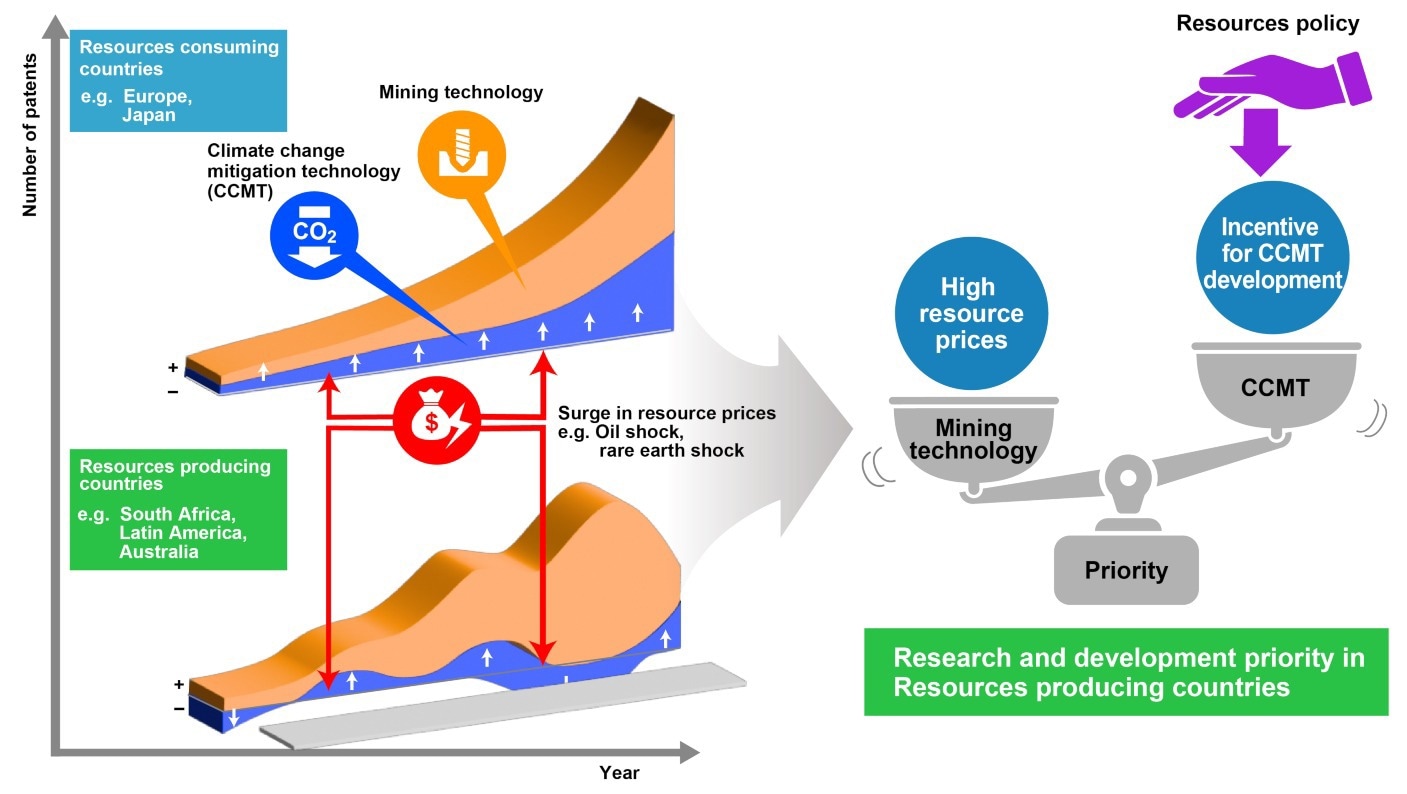Moving to greener technology has become a necessity as the world battles with the ongoing climate crisis. Naturally, businesses that are essential to daily lives are implementing such technologies into their operations.
 Although the number of mining patents (orange) and CCMT patents (blue) increased in resource-consuming and resource-producing regions, the increase was not uniform. It was in fact determined by the global economic trends that influence the cost of mining resources. The level and type of fluctuation depends on whether the region is resource-consuming or resource-producing. Understanding these trends can allow countries to implement policies that promote the development of CCMT in the mining sector. Image Credit: Kyushu University
Although the number of mining patents (orange) and CCMT patents (blue) increased in resource-consuming and resource-producing regions, the increase was not uniform. It was in fact determined by the global economic trends that influence the cost of mining resources. The level and type of fluctuation depends on whether the region is resource-consuming or resource-producing. Understanding these trends can allow countries to implement policies that promote the development of CCMT in the mining sector. Image Credit: Kyushu University
The mining industry, which obtains and refines the necessary raw materials to create the majority of green technology, is a factor in this. However, there is still a serious need for greater research into the economic and policy elements that encourage the mining industry to become more sustainable.
Hidemichi Fujii from Kyushu University’s Faculty of Economics in Japan and Andre Yamashita from the Control Engineering Group at Luleå University of Technology in Sweden examined the patterns in global patent applications from the mining and minerals industry to identify strategies for advancing R&D in mining-related climate change mitigation technology, or CCMT, in a report that was published in Resources Policy.
They discovered that changes in raw metal prices and the Paris Agreement impacted the industry’s development of CCMTs, though to varying degrees depending on the country and the sector’s economic contribution.
The goal of CCMT development is to reduce greenhouse gas emissions and the impact we have on the environment. A good way to analyze how an industry’s technology is developing is to look at patents filed over time. Our team looked at patent data from 2001 to 2016 from seven regions to calculate three major indicators of CCMT development in the industry for each region: Priority, Mining, and Scale.
Hidemichi Fujii, Study Lead and Associate Professor, Faculty of Economics, Kyushu University
The number of mining-CCMT-related patents divided by the total number of mining-related patents is the “Priority” indicator. If inventors prioritized research into CCMTs, that number would rise.
The quantity of mining-related patents split by the overall quantity of patents is referred to as “Mining.” This figure reveals how heavily inventors are focusing on creating technology for the mining sector as a whole.
The overall number of patents, which represents the whole quantity of research and development, is the definition of “Scale” at the end.
Fujii added, “We used these indicators to analyze the mining industry in seven major countries and regions: China, Japan, USA, Europe, Latin America, Australia, and South Africa. The first four have major patent offices, whereas the latter three are major mining regions. Through our analysis we found several interesting trends.”
For instance, while both total mining patents and mining CCMT patents increased globally, the rate and pattern of those developments vary depending on whether a country is a resource producer or a consumer.
In reaction to increases in the price of commodities like rare earth metals and oil, resource-producing regions changed their priorities for research and development more significantly.
Additional research revealed that a relative rise in mining-related R&D helped develop mining CCMT patents in the US, Europe, Latin America, and Australia.
While reducing the entire scope of their R&D, Japan and South Africa have expanded their concentration on R&D for both mining itself and associated CCMTs. However, China and the rest of the world have expanded their R&D efforts, which has led to the development of more green technologies.
“The year-by-year analysis showed that the Paris Agreement contributed to an overall increase in green technology in the mining sector. Increases in prices of metals contributed to the number of patents for the industry as well,” Fujii stated.
The team is hopeful that their new study will assist in implementing effective policies that encourage the growth of CCMTs for the industry and maximize the advantages for everyone in both countries and industries.
“The differences and similarities in R&D strategies can be used as a starting point to formulate country-specific science and technology policies that can combat the climate crisis. At the same time, they can make the most effective use of capital, and promote regulations that guarantee fair wages based on experience and skill,” concluded Fujii.
Journal Reference:
Yamashita, A. S., et al. (2022) Trend and priority change of climate change mitigation technology in the global mining sector. Resources Policy. doi:10.1016/j.resourpol.2022.102870